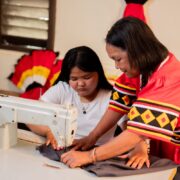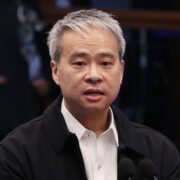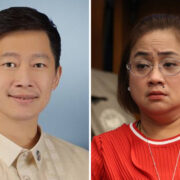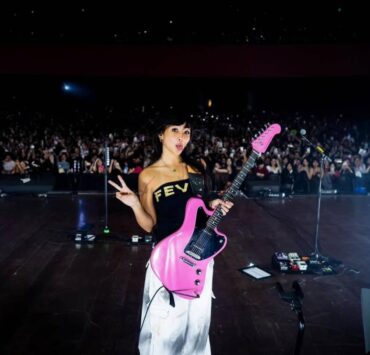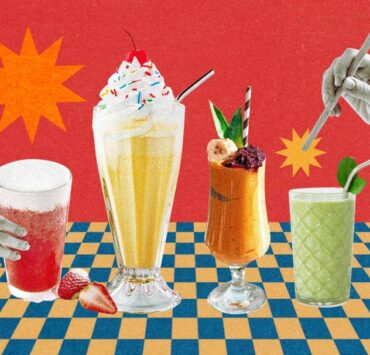Full send-off to Brooklyn: Joshua Villena’s risky reinvention
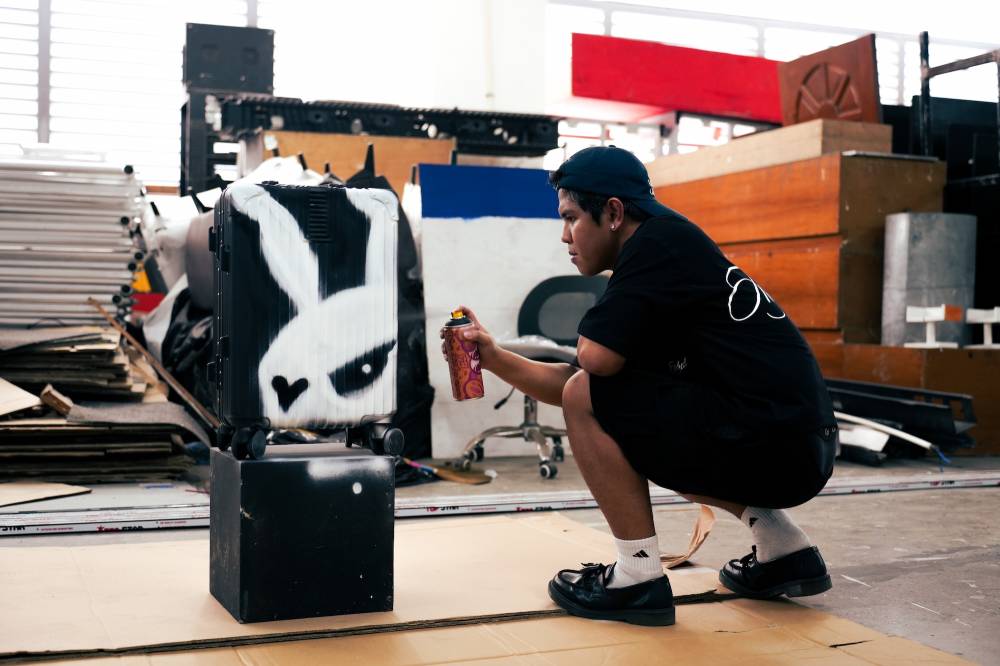
For many young artists, the leap from graduation to the global stage almost never happens. It remains a dream deferred, a what-if. But for Filipino Gen Z visual artist Joshua Villena, it became an actual possibility.
Fresh from iACADEMY’s animation program, he left Manila at 23 and threw himself into New York’s maelstrom. Days were consumed by the nine-to-five grind of design work; and nights, by the desperate, existential need to paint. In survival mixed with obsession, it was an initiation into the intoxicating crucible that is Brooklyn.
That frantic, staggering, and rather unfamiliar rhythm produced a breakthrough. His first solo exhibition, “Arrival of Yeshua” in Brooklyn, was a declaration of Villena’s creative grit and youthful boldness to dive headfirst into the brave new world that is New York City. It cracked open doors to new networks, collaborators, and ways of seeing. More than that, it confirmed Villena’s conviction that persistence, audacity, and sheer willpower could bend the world toward possibility.
Villena revisits his trajectory from a small town in Batangas to Brooklyn’s restless art scene, from setbacks that tested him to risks that defined him, and the vision that keeps him painting toward what’s next.
What led to your New York solo show “Arrival of Yeshua?”
I was working as a designer in Manhattan, [where] I met Waqas Ghani. He’s a filmmaker, photographer, and all-around creative. He’s the man behind the music videos and photos of Oscar-winning rapper and actor Joey Bada$$. We linked up and eventually opened up the idea of hosting this show at his studio in Brooklyn, which is Giani New York.
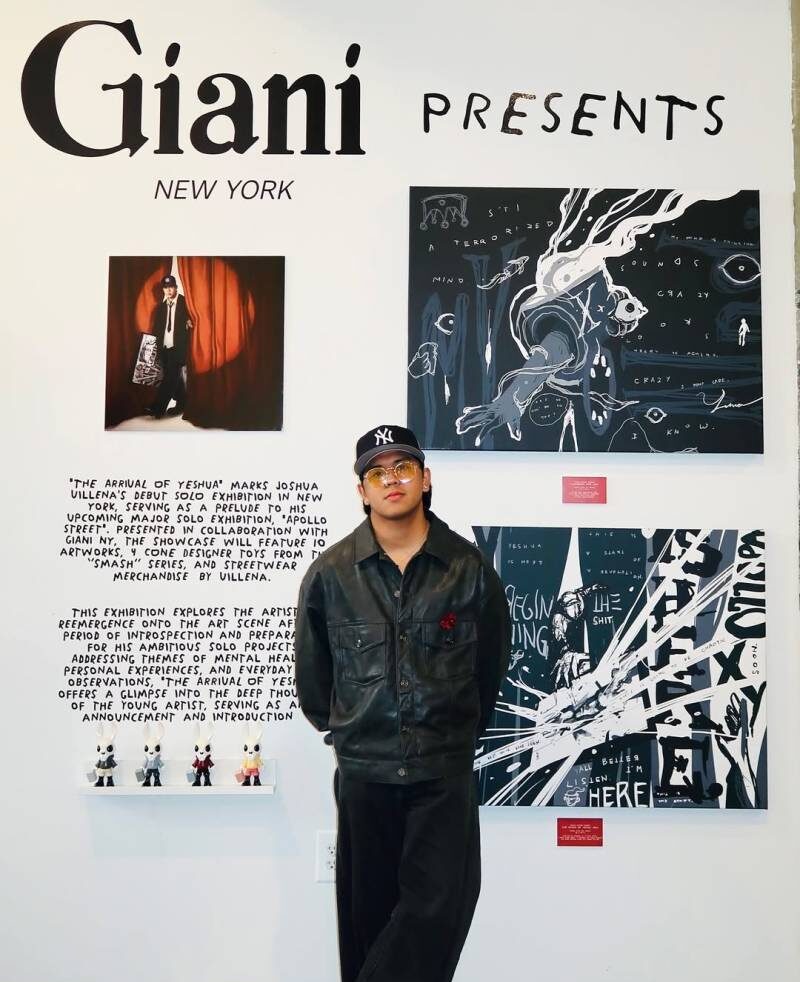
Moving to New York at 23 must’ve been a huge shift. What was the biggest challenge—and the biggest breakthrough—you experienced working as a designer in Manhattan?
The biggest challenge was probably that since I was working a nine to five, I didn’t have a lot of time to actually paint. The biggest breakthrough would be having my first solo show. I met a lot of people who opened a lot of opportunities for me and made me realize that nothing’s impossible.
Shortly after graduating from iACADEMY’s animation program, you staged your first solo show in New York, followed by “Homecoming” at the Nexus Gallery in Manila. How did the two differ in theme, creative process, and artistic direction?
They were two very different shows. The one I had in New York was digital artwork printed on canvas, and it was very personal—a little bit dark. The visual language was black-and-white ragged texts and illustrations. For “Homecoming,” I went back to acrylic and chose a bright and polychromatic palette while combining elements of realism, abstraction, and cartooning.
From being an aspiring artist from a small town in Batangas to staging your first solo show in New York, can you share some of the “lampposts” that guided you along your journey?
There was a time back in college when a painting of mine was sold in an exhibit, but it took months for the payment to reach me. On the day they were supposed to send it, it didn’t come through. I had my last bit of money, and I didn’t eat for three days waiting for that payment. That moment made me realize that if I can do everything on my own, I’ll do it. And I’ll do it the best way possible, so that it won’t happen again. I always think about that experience.

You dropped out of college at 16, but earned a Presidential Scholarship at iACADEMY soon after. What gave you the courage to take that leap, and how did those setbacks fuel your drive?
My mindset is always “it’s now or never.” And when I was 16, I was very inspired to be one of the greatest. When I dropped out of college, I didn’t see it as the end. I just saw it as a chapter in the book that would soon end—only if I made the best decisions. And that meant being courageous and sending my portfolio to iACADEMY.
You’ve blended the visual arts, fashion, and performance into your iACADEMY Nexus Gallery show “Homecoming.” Why is it important for you to dissolve the boundaries between mediums and disciplines?
I was raised loving not only visual arts, but music too. My father sings and plays the guitar. [So do] my cousins and aunt. Then I went to Batangas Province High School for Culture and Arts, where you live for four years with a bunch of talented kids who sing, paint, act, dance, and write. So doing the show was probably just me letting the younger version of myself know that it’s possible to combine all those ideas that I loved.
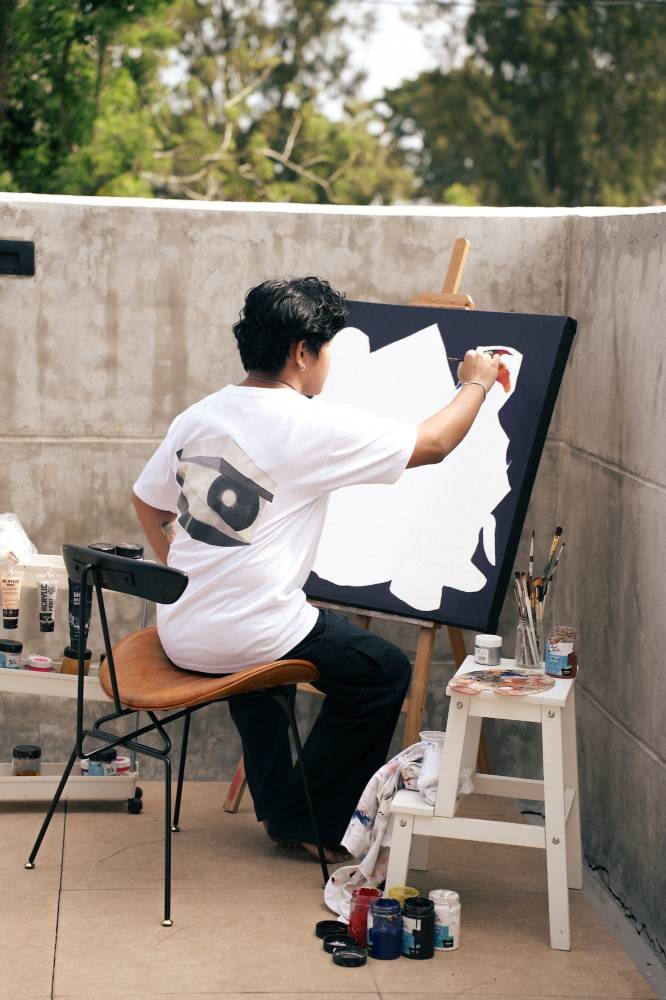
What would you say to a fellow Gen Z artist hoping to make their mark—both in the Philippines and internationally?
I’m also someone asking for an answer to that question. But I guess since we’re all asking, the answer probably is that we should just believe in ourselves and just do it. There’s no other way but to do it, regardless of all the challenges that may come our way. Eventually, we’ll see results from all our hard work.
You’ve mentioned creatives like Pharrell and Basquiat as some of your key influences. What draws you to their work, and how do they influence the way you build your own visual language and aesthetic sensibility?
Pharrell as a multihyphenate [inspired me in so many ways]. I was a visual artist first, then I started loving and wanting to do fashion, music, hip-hop, film—everything. Not only is Pharrell doing it, he’s doing it at the highest level, too.
As for Basquiat, I just love that he didn’t care, and he painted whatever came into his head. They inspire me to be myself and believe in my own world.
What’s next for you?
Life and fate will decide that for me. But I have plans, and I’ll share them again once they’re done.

